ARTICLES: Phenomenal Gemstones | Optical Phenomena in Gemstones
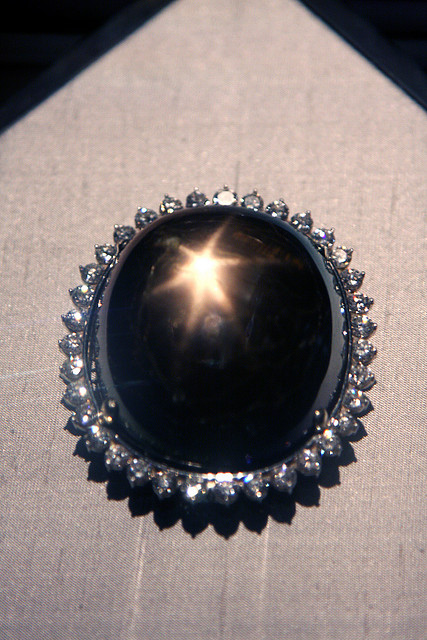
Black star of queensland A fine example of a Phenomenal Gemstone
Precious Gems and stones are fascinating. Theirs is a world of endless mysteries. Precious gemstones have intrigued people across the world ever since man has known them. Not only are they prized for their beauty, rarity and durability, each gem has a distinct innate power, that human beings have harnessed for their good ever since Vedic texts revealed of their mystical powers.
Phenomenal Gemstones
Besides this, there are several gemstones that have the key of their magnetic appeal in the distinct visual appearance or because of their optical properties. The gems and stones displaying various optical phenomenon are termed as "phenomenal gemstones".
Explained Below are some optical phenomenon found in precious gemstones and semi-precious gemstones.
Types of Optical Phenomenon’s in Gemstones
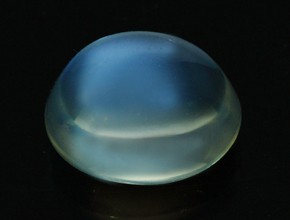
Blue Moonstone displaying Adularescence
Adularesence: Adularescence is the phenomenon of blue sheen reflecting on the domed cabochon surface of Moonstone. The phenomenon of shimmer is created by the interaction of light with layer of little “albite” crystals in the moonstones. The quality of blue shimmer is determined by the thickness of layer of these tiny crystals, thinner the layer, better the blue flash. This usually appears as a billowy light effect. Moonstone is orthoclase feldspars and are also known as Selenite. The Romans called them Astrion.
Metaphysical properties of moonstone include stimulating knowledge, nurturing, mothering, selflessness, sensitivity, humanitarian love, problem solving and decision making, emotional protection. In terms of physical healing, Moonstone is excellent for female health. It is the alternative gem for natural pearl.
Asterism: The gem material that is low on clarity is often cut as cabochon. In such gems and stones when the light falls on the domed surface and makes star -like rays, the phenomenon is called asterism. There are 4 ray and 6 ray stars observed normally. This happens when the orientation of the needle like inclusions or silk within the crystal is on more than one axis.
These inclusions are generally a common mineral titanium dioxide or rutile, as it is known. Asterism is commonly observed in corundum - rubies and sapphires. The Black Star of Queensland, the Star of India and the Star of Bombay are some of the world famous sapphires displaying asterism.
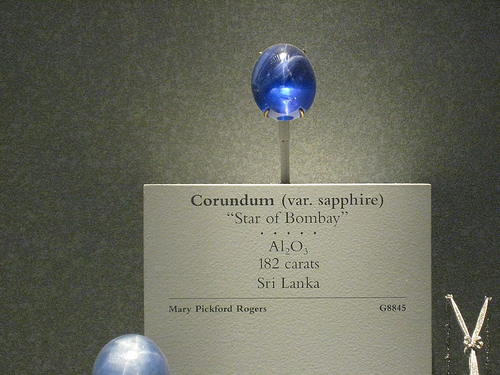
The Star Of Bombay
Of late, synthetic star sapphires are made in the labs using the Verneuil process.
Chatoyancy: Chat in French means Cat and chatoyancy refers to a phenomenon akin to opening and shutting of cat’s eye. This phenomenon can be seen in Chrysoberyl cat’s eye gem with great clarity. Cat eye gems have a single sharp band (sometimes two or three bands )running across the domed cabochon surface. The Chrysoberyl Cat’s eye gem is very specifically cut en cabochon to highlight chatoyancy. The rutile silk in this case is aligned perpendicular to the crystal. So when light falls on it, the sharp band can be seen. In the best cases, the chatoyant Chrysoberyl cats eye visually separates the surface into two halves creating the milk and honey effect as the stone is moved under light.
Cat’s eye is the gemstone that carries the planetary energy of Ketu and is used in gem therapy to harness its energy.
Iridescence: Iridescence is also known as goniochromism, a phenomenon where the surface of a material displays several colors as the angle of viewing changes. It can be easily seen in neck of a pigeon, soap bubbles, wings of a butterfly, mother of pearl etc.

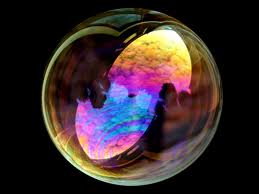
Iridescence in a Soap Bubble
The irregularity of surface and large interstitial spaces allow light to pass and reflect back from multiple surfaces (diffraction) causing the multi color visual effect. Combined with interference, the result is dramatic. Natural pearls display iridescence that is very different from its body colour. Tahitian pearls display great iridescence.
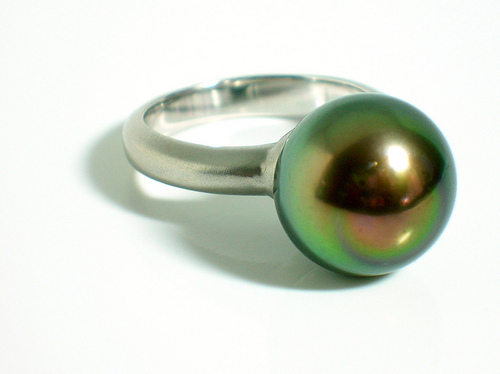
Tahitian Pearl: Pic Courtesy Flickerriver
Play of colour: The wonderful gem called opal displays a beautiful color. The fire opals from Lightening Ridge, Australia (showing shifting patches of luminous spectral colors against black) are famous for this phenomenon. While this phenomenon- play of color is a type of iridescence, it is wrongly called fire. Fire is actually a term used for the brilliant flashes of color in a diamond which is caused by dispersion of light. In case of opals it isn’t dispersion and hence cannot be called fire.
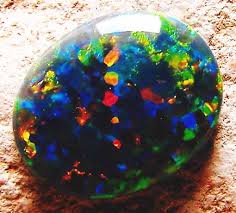
Fire Opal Pic Courtesy: Opal Auctions
Pleochroism: Pleochroism is a phenomenon where a gemstone appears to have a different color when viewed from a different direction. Iolite, also known as dichroite displays exceptional pleochroism where the usual violet blue color changes to a grayish-yellow. Kunzite, kyanite and unheated tanzanite among others are also pleochroic. These gems are all doubly refractive gemstones.
Color change: The most famous example that can be taken in reference to colour change is the alexandrite. These gems and stones appear very different in incandescent light compared to natural day light. This is largely due to the gems chemical composition as well as strong selective absorption. The alexandrite appears green in daylight and appears red in incandescent light. The phenomenon of color change can be found in some sapphires and tourmaline also.
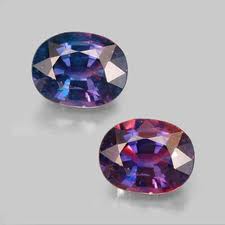
Color Changing Sapphires Pic Courtesy Minerals.net
Labradorescence: Labradorescence is iridescence but is highly directional because of twinning of crystals. It is found in the gemstone called labradorite.
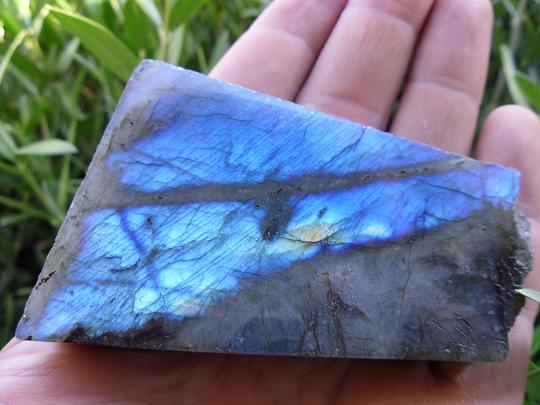 .
.
© Gemstoneuniverse.com, All rights reserved.
http://www.gemstoneuniverse.com

Gemstoneuniverse-The Gold Standard in Planetary Gemology


